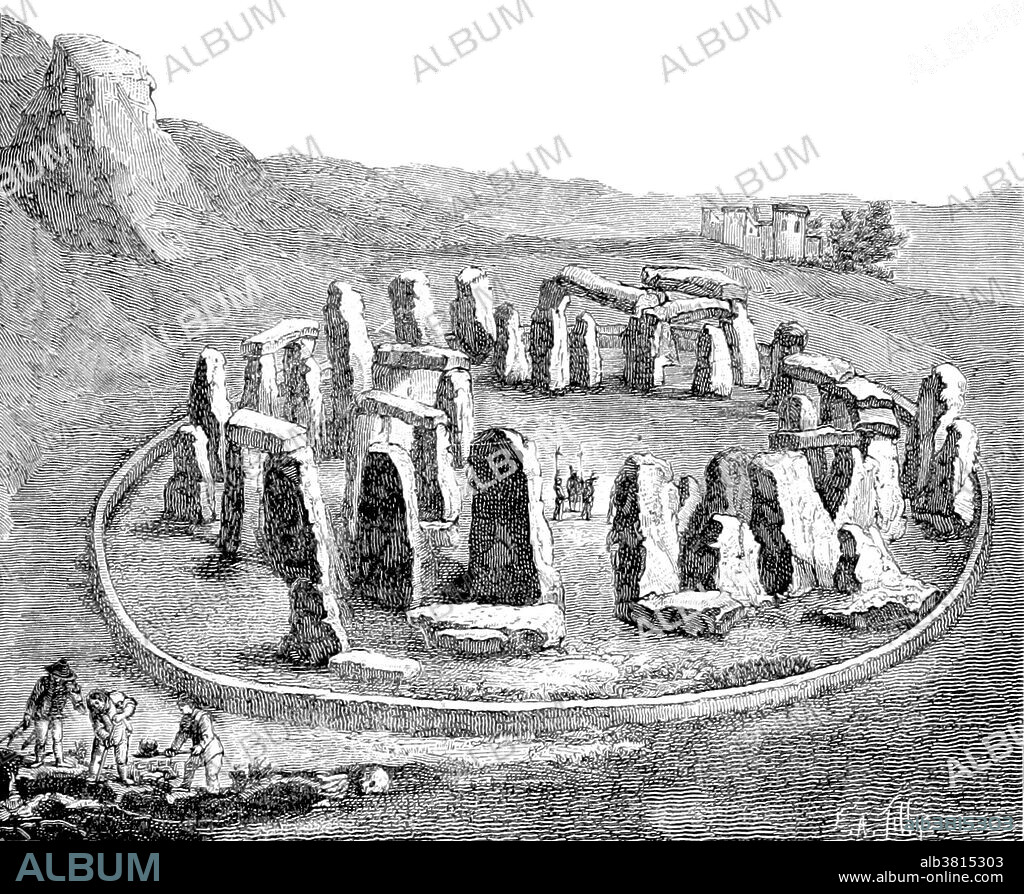alb3815303
Stonehenge, Prehistoric Monument

|
Añadir a otro lightbox |
|
Añadir a otro lightbox |



¿Ya tienes cuenta? Iniciar sesión
¿No tienes cuenta? Regístrate
Compra esta imagen

Título:
Stonehenge, Prehistoric Monument
Descripción:
Ver traducción automática
Stonehenge is a prehistoric monument in Wiltshire, England. One of the most famous sites in the world, Stonehenge is the remains of a ring of standing stones set within earthworks. It is in the middle of the most dense complex of Neolithic and Bronze Age monuments in England, including several hundred burial mounds. Archeological evidence indicates that Stonehenge could have been a burial ground from its earliest beginnings. The dating of cremated remains found on the site indicate that deposits contain human bone from as early as 3000 BC, when the ditch and bank were first dug. Such deposits continued at Stonehenge for at least another 500 years. Throughout the 20th century, Stonehenge began to be revived as a place of religious significance, this time by adherents of Neopagan and New Age beliefs, particularly the Neo-druids. The site and its surroundings were added to the UNESCO's list of World Heritage Sites in 1986. Illustration not captioned or dated depicts a sheep herder with his flock in the ruins of Stonehenge. Image taken from page 521 of "La création de l'homme et les premiers âges de l'humanité, Ouvrage illustré, with a preface by C. Flammarion, 1887.
Personas:
Crédito:
Album / Science Source / British Library
Autorizaciones:
Modelo: No - Propiedad: No
¿Preguntas relacionadas con los derechos?
¿Preguntas relacionadas con los derechos?
Tamaño imagen:
3900 x 3203 px | 35.7 MB
Tamaño impresión:
33.0 x 27.1 cm | 13.0 x 10.7 in (300 dpi)
Palabras clave:
ANTIGUO • ANTIGÜEDAD • ARQUEOLOGIA • ARQUEOLÓGICA • ARQUEOLOGICO • ARTE • BLANCO Y NEGRO • CIVILIZACION ANTIGUA • CULTURA ANTIGUA • DIBUJO • EDAD BRONCE • EDAD DE BRONCE • EUROPA • FAMOSO • HISTORIA • HISTORICO • ILUSTRACION • IMPORTANTE • INGLATERRA • LLANURA DE SALISBURY • MEGALITHIC • MEGALITO • MENHIRES • MONUMENTO • MUNDIAL DE LA UNESCO PATRIMONIO DE LA HUMANIDAD • OBRA DE ARTE • PATRIMONIO DE LA HUMANIDAD • PREHISTORIA • PREHISTORICO • PUNTO DE REFERENCIA • RUINAS • SÍTIO • STONEHENGE
 Pinterest
Pinterest Twitter
Twitter Facebook
Facebook Copiar enlace
Copiar enlace Email
Email
